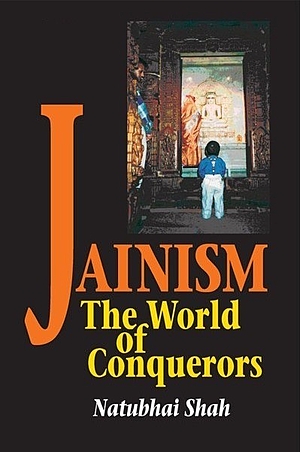Jainism is regarded by its followers as the world's oldest religion, which was revived by the tirthankara Mahavira more than 2,500 years ago, in Bihar, northern India. He addressed himself to the mass of the people, delivering his teachings in Ardha Magadhi, then the language of the people in Magadha (Bihar). It is Mahavira who is credited with founding one of the distinctive features of contemporary Jain society and religion: the fourfold organisation of male and female ascetics and male and female laypeople. Throughout its long history, Jainism has seen periods when it has flourished and others when it has declined, but for thousands of years it has remained a living religion and a way of life in India. The three most important expressions of Jain teaching are the 'Three Jewels': Right Faith, Right Knowledge and Right Conduct. For followers of Jainism, the most important outward practices are ahimsaa, 'non-violence and reverence for all life', aparigraha, non-attachment to worldly possessions, power or position, and anekaantavaada, 'relative pluralism' or the multiplicity of views.
Jainism can be seen as a microcosm of Indian society, yet its concepts have a direct relevance to many issues faced by the modern world. In the vibrant societies in which Jainism flourished, philosophical debates ranged widely, touching upon the entire range of human experience and understanding. Although all Jains shared a common fundamental outlook, differences of interpretation were bound to arise and these were responsible for a variety of rituals and worship, which led to the emergence of the four major sects of Jainism: Svetambar, Digambar, Sthanakvasi and Terapanthi. These sectarian differences seem less relevant outside India and the experience of Jain migration in East Africa and to the West has created new opportunities for seeing Jain identity in a fresh light.
In the work I undertook in creating the Jain Centre in Leicester, I had contact with and received the blessing and support of both the lay leaders and the ascetics from all the major sects of Jainism, to whom I am grateful for imparting the knowledge directly or indirectly about many aspects of Jainism that are not easily found in the text books. I am also indebted to my supervisor Dr. S. L. Gandhi for encouraging me to further my studies for a doctorate degree at the Intercultural Open University, The Netherlands, and for guiding me to write this dissertation. I acknowledge my gratitude to those who have helped me, directly or indirectly in the completion of this work. I must thank the many authors, mentioned in the bibliography, whose work has been a source of inspiration.
My special thanks are due to my wife Mrs Bhanumati Shah for her inspiration, sacrifice and her untiring work in entertaining all who helped me to complete the dissertation. I am grateful to my daughter Leena and my son Samir and their families for the constant inspiration to finish the work. It is my sincere hope that this work will serve both as an accessible introduction to Jainism for the general reader and as a spur to the scholars to undertake further study and research into this ancient faith.
April 1998
Dr Natubhai Shah
London
 Dr. Natubhai Shah
Dr. Natubhai Shah
